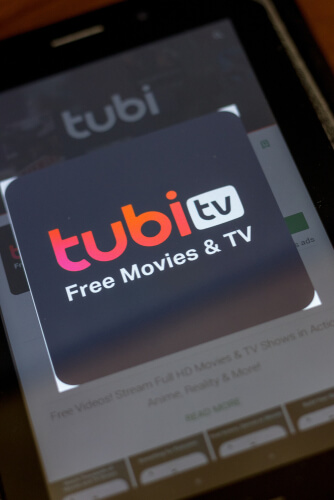
With all the Netflix cracking down on VPN services and copyright trolls going after Kodi users, no wonder people are flooding towards Kodi as their first-choice streaming service and getting Kodi dependency errors (respectively!!).
What we mean to say is that generally speaking, Kodi as a media player is fast and reliable.
The simple proof of the fact that Kodi is indeed an excellent application is that users have the option of installing and then using Kodi on any given mainstream device.
It even works on some of the most obscure devices that one can find in thrift shops.
Kodi works with desktop computers as well as media streamers, just to name a few.
However, nowhere does Kodi and/or anyone else gives the guarantee that users will not encounter any type of performance issue.
One of the most commonly encountered Kodi error is the Failed to Install a Dependency Kodi error.
A lot of Kodi users hate this error because it prevents Kodi users from installing and then using Kodi add-ons.
Now is the time to take a slightly closer look at the solutions that Kodi users can implement in order to solve the issue of Failed to Install a Dependency.
After reading this guide, we are sure that the reader would start enjoying his/her favorite TV Kodi add-ons very soon.
The first thing Kodi users need to know about the Failed to Install a Dependency error is that there are many different types of solutions to this problem.
The user needs to make sure that he/she only tries the one that suits his/her setup, device and/or Kodi version.
Of course, the actual Failed to Install a Dependency Kodi error is rather simple to solve.
Kodi users don’t really need to take a deep dive into any menu and/or Kodi files.
So just relax and concentrate (a bit) as we go through the whole process explaining how to solve Failed to Install a Dependency Kodi error.
Before we actually begin the guide we have to go through a disclaimer:
In this guide, users will read a lot about Kodi and its related software development.
This is based on an open-source and free code.
With that said, the thing about Kodi software in this guide is that it comes from unofficial third-party sources.
Additionally, this third-party code is also available for everyone to download without paying any money.
Security Gladiators cannot claim any kind of responsibility for the way readers understand and decide to use the software that we will mention in this guide.
Do take note that Security Gladiators does not and has never condoned any sharing of pirated content and/or copyright infringement.
Security Gladiators has no affiliation with any of the software that is mentioned in this guide in any way.
Readers need to make sure that they read the guide carefully and use the mentioned software with proper care.
Table of Contents
Warning for Kodi users before we go to the solutions
Internet service providers can and do collect user information without the user’s explicit consent.
Yes, that is true.
Not only that, internet service providers also filter the user’s web browser online data.
What does that mean for the end user?
It means that users who utilize Kodi in order to stream high-quality premium but copyrighted content can get into legal trouble.
Moreover, internet service providers have all the opportunity in the world to block access to pre-selected streams.
This is the reason why a lot of Kodi users run into annoying Kodi errors.
Nothing is stopping the internet service provider from entirely throttling and blocking streaming as well.
These are just some of the reasons why we recommend Kodi users to always make use of a VPN service.
Using a VPN service would mean that they have protected their privacy and online identity.
A VPN service makes sure that the user’s privacy and identity always remain preserved even when the user is streaming content from media players such as Kodi.
Here at Security Gladiators, after years of VPN reviews and research, we recommend that users should go with IPVanish as their primary VPN for Kodi.
IPVanish is a great VPN for Kodi because of many reasons.
Some of those reasons include the fact that IPvanish is very reliable and fast.
It has the ability to unblock almost all streaming sites and services.
In fact, IPVanish, once the user has activated it, can easily protect the user’s web traffic via encryption.
IPVanish also enables the user to surf the internet with complete anonymity.
All of this acts in a way that the user’s internet service provider is unable to spy on the user.
In short, any Kodi user who wants to become absolutely invisible on the internet should use a VPN service.
IPVanish is a great VPN service for Kodi because it supports all Kodi add-ons.
Moreover, it does not keep any user logs.
That means, IPVanish has no idea what the user is doing online.
Even some of the better VPN service providers keep information on the user’s traffic history on their company servers.
IPVanish does not do that.
Kodi users are free to do what they please as long as they are using IPVanish on their Kodi streaming device.
IPVanish helps Kodi users to stream and browse the web without having to worry about someone using that information against them.
to subscribe to IPVanish from the official website right here and right now and start streaming content from any Kodi add-on without any limitations and/or restrictions.What does the Failed to Install a Dependency Kodi error mean
It should not be hard for anyone to believe that a lot of people are currently having problems with installing certain Kodi add-ons.
Such errors tend to come up from time to time.
However, in the large majority of such cases, Kodi users report that they are actually facing various dependency errors.
We have already mentioned the fact that Failed to Install a Dependency does cause a lot of Kodi streaming issues.
In order to have a better understanding of the whole problem, one has to go in real deep.
So, to start off, we’ll first try to explain what does the Failed to Install a Dependency mean.
After that, we will discuss in detail about all the different methods in which the Kodi user can fix this Failed to Install a Dependency Kodi error.
What exactly is a Kodi Dependency?
A lot of Kodi users don’t seem to know the simple fact that there are actually very few Kodi add-ons which are able to work properly on their own.
The Kodi add-ons which work on their own are usually fairly simple Kodi add-ons.
One of the reasons why such Kodi add-ons are able to work on their own is because they host all the content that they want Kodi users to stream.
On the other hand, there are those complex Kodi add-ons.
These Kodi add-ons tend to rely on various third-party tools and services.
They use it to scrape the wider world of the web for fresh content and present Kodi users with working media streaming links.
Now, the third-party services that we mentioned about two lines ago, are actually what the Kodi community calls as dependencies.
Kodi installs these Kodi add-on dependencies at the very same time as it installs Kodi add-ons.
Moreover, these dependencies usually run in the Kodi streaming device’s background.
A lot of times, there is only one dependency that a given Kodi add-on has to take care of.
Other times, especially for Kodi add-ons that show a lot of premium content like Exodus and Covenant, Kodi add-ons require three (sometimes four) or more third-party online services.
Needless to say, Kodi add-ons don’t always install these third-party services with competency.
And this results in the birth of the Failed to Install a Dependency Kodi error.
The Actual Result of Failed Kodi Dependencies
Okay, so this error occurs right around the time when the user has seen a magnificent Kodi add-on and is about to actually try it.
The Kodi user thinks that just by following the instructions step-by-step and carefully will result in the user reaching the completion stage.
And in some cases, the user does make his/her way to the final stage.
After the final stage, the user tries to run Kodi and then the freshly-installed third-party Kodi repository.
To do so, the user finds his/her Kodi add-ons.
However, as soon as the user hits the button that says Install, the user receives the now-notorious Failed to Install Dependency Kodi error.
Now, we know we have talked about many of the side-effects of getting this Failed to Install a Dependency Kodi error.
But perhaps the most irritating one regarding this Kodi error is that the user loses the ability to use and/or, in some cases, install the Kodi add-on.
In other words, if during the installation process, the Kodi dependency fails for any reason, then Kodi would not install the Kodi add-on no matter what.
The other interesting bit about the situation is that in the vast majority of Kodi error cases, there is no way for the Kodi user to know that one particular Kodi add-on would fail in fulfilling a dependency and hence would not install.
Most of the times, Kodi users spend hours digging into their Kodi log files.
That doesn’t help one bit because even if the Kodi user spends days looking at these log files, there is no guarantee that the Kodi user would have enough technical knowledge to actually make any sense of the Kodi log data.
However, we have a couple of quick fixes for this problem.
Read on to find out more about the Failed to Install a Dependency Kodi error.
Failed to Install a Dependency Kodi Error: All Possible Fixes
As mentioned before as well, in the vast majority of the cases, the Failed to Install a Dependency Kodi error has two solutions.
One of the solutions that we recommend most of the times is for the Kodi users to delete a specific database file.
This way, Kodi has a way to fix itself without any external help automatically.
However, we have enough experience to know that such solutions don’t work for everyone.
So, in the case where the above-mentioned solution does not work for you, then we recommend that users should try to install Kodi dependencies on their own via manual methods.
Let’s see how Kodi users can do that effectively.
Method 1: Rebuild Kodi Database
This method is not as hard as it sounds.
Sometimes Kodi has this habit of corrupting its database files for no apparent reason.
Of course, a corrupted database file won’t really stop the user from using Kodi.
But it will present the Kodi user with enough problems while installing Kodi add-ons to simply quit.
That is why we want to solve this issue right here and right now.
Important Notice:
Kodi users who have already installed a good number of Kodi add-ons should know that if they go ahead and rebuild Kodi database then that might delete their present Kodi add-ons.
In other words, the method that we are about to describe is more suitable to new Kodi users who still have not gone beyond the beginner level in experimenting with various Kodi add-ons on their own.
- First, run Kodi.
But do make sure you do so with admin privileges.
To do that, the user first has to perform a right-click on the Kodi icon and then choose the option that says Run as Administrator.
For Mac users, they simply need to make sure that they have admin privileges when they log in as a user to their machine. - After ensuring that the first step is completed, the user must launch Kodi.
- Then the user should click the icon that comes in the shape of a Gear icon.
This icon is usually located in the top-left corner of the screen. - The next step is to click on the option that says File Manager.
- Then the user has to concentrate on the left side of the screen and then double-click the option that says Profile Directory.
- After that, the user has to open the folder that is named Database.
- Then inside that folder, the user has to search and find the file that is named Addon27.db.
Then the user to perform a right click on this file and then select Delete. - Kodi will ask the user to confirm the decision.
As before, our recommendation is for the user to go ahead and delete the Kodi file in order to proceed forward. - The final step is to actually shut down the Kodi media player.
Then the user has to wait for a couple of moments before Kodi does its thing.
After waiting for a few moments, the user must open Kodi one more time.
Now the user should go ahead and try again for a fresh Kodi addon install.
It is at this point that the user should take special care and try to notice if Kodi gives that Failed to Install a Dependency error once again.
We hope that the Kodi user has a smoother experience in installing Kodi addons after following the above guide.
It should fix any lingering issues as well.
However, we are well aware that a single solution never works for all Kodi users.
Because of that, we have listed another solution for those Kodi users who did not manage to fix the Failed to Install a Dependency error with our first method.
Method 2: Install Kodi Dependencies Manually
This is that section of our guide where we will show the user how to actually install some of the most important and popular Kodi dependencies manually.
The first thing Kodi users should know is that they will need to implement this Method 2 before they actually install a Kodi add-on.
With that said, let’s start.
- First, the user should open up Kodi.
- Then the user should click on the gear icon that appears in the top left corner of the screen.
- After that, the user should click on the option that says File Manager
- Then the user should click on the option that says Add Source. This option usually appears on the left side of the Kodi screen.
- Right about this time, the user should have no problems in seeing a pop-up message.
This is the time when the user should look for the option that says None.
After clicking it, Kodi will ask the Kodi user for an address.
At that point, the user should first copy and then paste the following precise URL: https://fusion.tvaddons.co/.
After that, the user should look slightly below the current box and click on the box that says “add a name for this source”.
Click on this box and then type TV Addons.
Then the user should click on the option that says OK. - Now is the time to make your way back to Kodi Home Screen.
This is easily doable with the press of a single backspace button. - After that, the user should go to Add-ons via the main Kodi menu.
- Take a look at the top corner of the screen and there should be an icon in the shape of an Open Package.
Click the icon in order to open a new screen. - Then choose the option that says Install from zip file.
- Ater that, go ahead and open the source that you added in the above steps (Step 5).
Users who named their source as TV Addons from Step 5 should search for this very option from the list and then click it. - When that is done, the user should open up the folder that says Kodi-scripts.
- Inside that folder, the user should find a total of two ZIP files.
The user must install all of these Kodi files since all of these represent important and rather critical dependencies.
So just move forward and perform a click on the very first file from the list. - Within the next couple of moments, the user should see a notification from Kodi informing the user that Kodi has installed the dependency.
- The next step is to simply repeat the above step for all the files/dependencies which are present in the Kodi-scripts folder.
This is pretty much it.
Now there is nothing stopping the user from installing his/her favorite new Kodi add-on.
We hope that after following this METHOD 2 guide, the user will have no trouble in streaming content from Kodi after manually installing all the required Kodi add-on dependencies.
Additional Help.
We have present the Kodi user suffering from Failed to Install a Dependency error a total of two methods to solve the error.
Our hope is that users will have enough knowledge now to fix their Failed to Install a Dependency error.
However, if a Kodi user still has not managed to get rid of this Kodi error then there are some additional resources that users can access via the internet.
If the above two solutions did not work, then the user should take our advice and try to delete his/her Kodi cache.
Here is a guide on how to do that and much more.
Our research shows that in many cases deleting the Kodi cache can actually fix all problems that Kodi users regularly come across while installing Kodi addons.
Another way to fix Kodi add-ons error is to go through a list of probable causes and fix them one by one until Kodi starts working.
Click here for a guide on how to do that.
Our guide will show the Kodi user a multiple number of solutions to some of the most regularly encountered technical Kodi problems.
When facing Kodi errors such as Failed to Install a Dependency, users should sometimes think smart and forget about whichever Kodi addon is giving them such problems.
Instead of working with the troublesome Kodi add-ons, Kodi users should try to install a new and different Kodi add-on.
The obvious question that arises from all of this is that which Kodi add-on should the user install.
To that, we say check out our guide.
We are confident that any Kodi user would find success after reading through the list of Kodi add-ons that we have provided in the above-linked guide.
Conclusion
To fix Failed to Install a Dependency error the Kodi user has three options.
These are as follows,
- A VPN service
- Method 1 (described above)
- Method 2 (described above)
We have tried our best to provide users with the best possible solutions that will help the Kodi user solve Failed to Install a Dependency error.
Readers should now use our comments section below to let us know if our fixes worked for them.
If our solutions did not work for you then do let us know.
As always, we are all ears now.
Readers should take this opportunity and use the comments section to let know if this article helped them.




